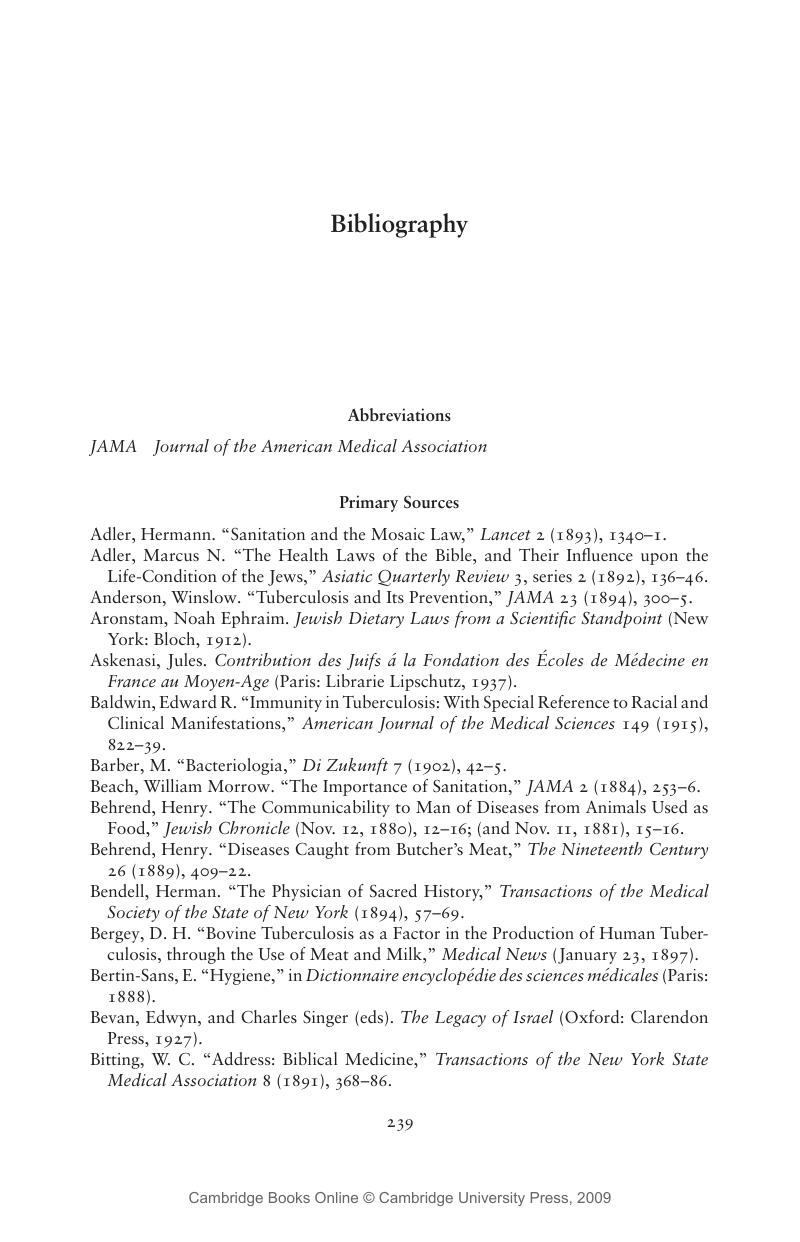Book contents
- Frontmatter
- Contents
- Preface and Acknowledgments
- THE HEALTHY JEW
- Introduction: “Links in a Long Chain”: Jews, Judaism, Health, and Hygiene
- 1 “'Tis a Little People, But It Has Done Great Things”: The Role of Health and Medicine in Modern Jewish Apologetics
- 2 Moses the Microbiologist: Alfred Nossig's The Social Hygiene of the Jews
- 3 Healthy Hebrews, Healthy Jews: The Bible as a Sanitary Code in Anglo-American Medical Literature
- 4 From Ghetto to Jungle: Darwinism, Eugenics, and the Reinterpretation of Jewish History
- 5 TB or Not TB, That Was a Jewish Question: Moses, Kashrut, and the Prevention of Tuberculosis
- 6 “Then What Advantage Does the Jew Have?”: Judaism as a Model for Christian Health
- 7 Conclusion
- Notes
- Bibliography
- Index
- References
Bibliography
Published online by Cambridge University Press: 18 July 2009
- Frontmatter
- Contents
- Preface and Acknowledgments
- THE HEALTHY JEW
- Introduction: “Links in a Long Chain”: Jews, Judaism, Health, and Hygiene
- 1 “'Tis a Little People, But It Has Done Great Things”: The Role of Health and Medicine in Modern Jewish Apologetics
- 2 Moses the Microbiologist: Alfred Nossig's The Social Hygiene of the Jews
- 3 Healthy Hebrews, Healthy Jews: The Bible as a Sanitary Code in Anglo-American Medical Literature
- 4 From Ghetto to Jungle: Darwinism, Eugenics, and the Reinterpretation of Jewish History
- 5 TB or Not TB, That Was a Jewish Question: Moses, Kashrut, and the Prevention of Tuberculosis
- 6 “Then What Advantage Does the Jew Have?”: Judaism as a Model for Christian Health
- 7 Conclusion
- Notes
- Bibliography
- Index
- References
Summary

- Type
- Chapter
- Information
- The Healthy JewThe Symbiosis of Judaism and Modern Medicine, pp. 239 - 258Publisher: Cambridge University PressPrint publication year: 2007



